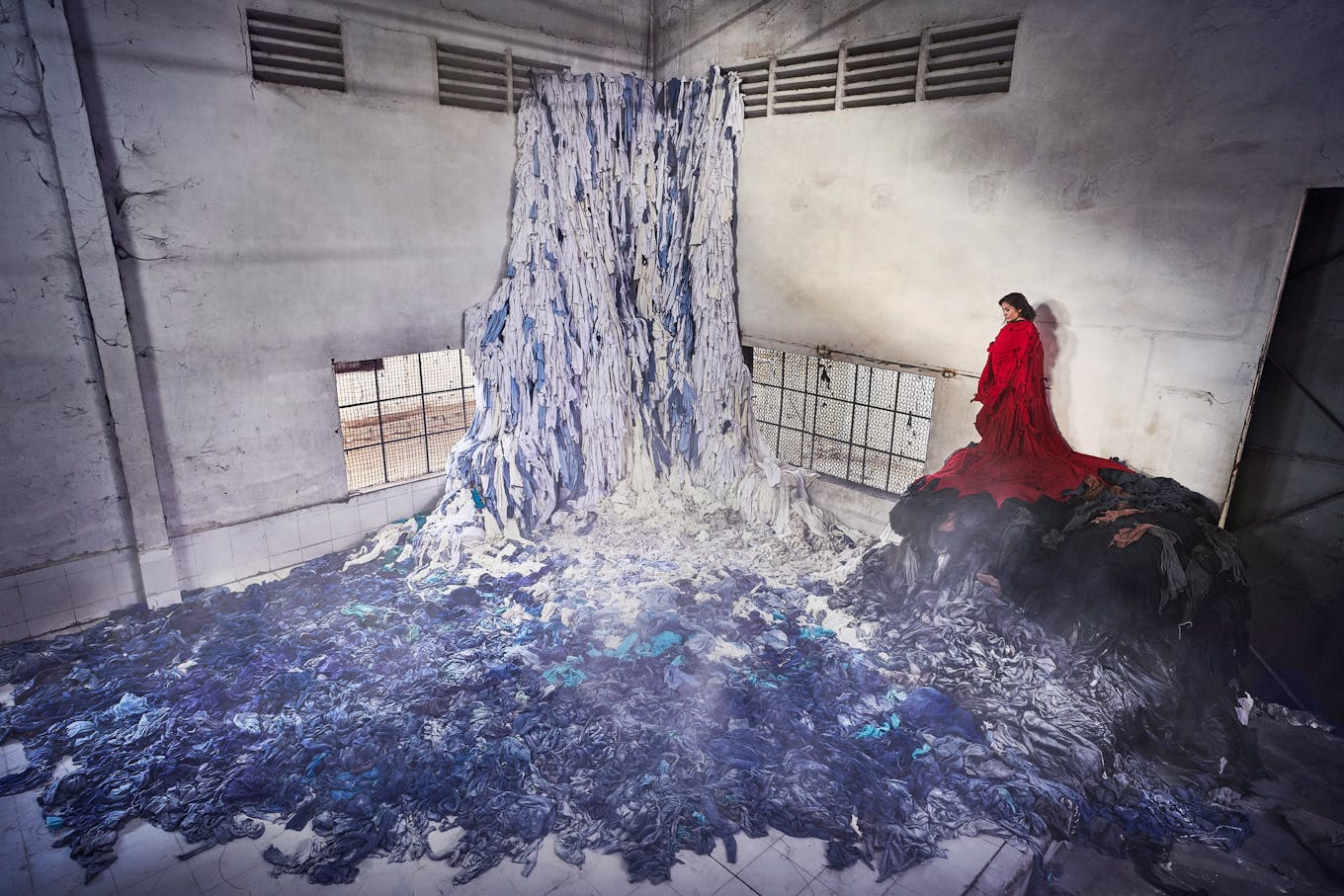The average person wears about 2500kg of clothing in their lifetime. Picturing that amount of clothes is almost impossible.
To continue watching, subscribe to Eco‑Business.
There's something for everyone. We offer a range of subscription plans.
- Access our stories and receive our Insights Weekly newsletter with the free EB Member plan.
- Unlock unlimited access to our content and archive with EB Circle.
- Publish your content with EB Premium.
But photographers Von Wong and Laura Francois of responsible fashion movement Fashion Revolution found that weight in textiles in the warehouse of a bankrupt garment company in Phnom Penh. Then they made an art exhibition out of it called Clothing the Loop.
Using art to communicate big, complex issues like the environmental impact of the fashion business has yet to gain much traction outside the West. But, as a global centre for cheap manufacturing, the Cambodian capital is an apt place to highlight the wastefulness of the fashion business.
While the abandoned fabrics were unsalvageable, the team along with the help of over 50 volunteers from more than five countries, repurposed the discarded garments into artwork depicting troubling scenes from nature.
A white and blue waterfall cascading out of ventilation ducts reflects the 27,000 litres of water needed to produce one cotton t-shirt.

Image: Von Wong
A spindly, leafless tree structure reaching into the collapsing roof represents the 70 million trees cut down yearly for the fibres to make our clothes. Clothing scraps twirling around a spiral metal structure into the scaffolding of the building become a tornado, a symbol of the clean air sacrificed by endless clothing consumption; the fashion industry is expected to produce 2.8 billion tonnes of CO2 per year by 2030.
Von Wong and Francois’ idea behind the exhibit is to spark debate around the circular economy, although it is unclear what will happen to the clothing once the exhibition ends. The process of creating the exhibition looked at the communal aspect of creating art and becoming aware of our impact as consumers.
The old garment factory has since been renovated into a co-working space and art incubator open to the public.

















